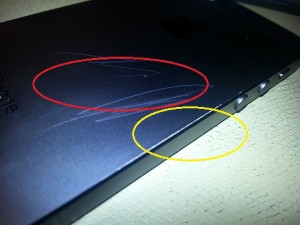How important is a small scratch on an iPhone? In our class, one topic that interested me was product quality and its many definitions, dimensions, and quality systems. Through vacation trips and experiences around the world, I have obtained all kinds of products not knowing much about quality comparisons. I did not realize that there was a quality system like ISO 9000 that companies acquired. Learning this will help me better examine products before making the purchase.
On Forbes.com, there was an article that talked about the struggles in quality control. Thousands of workers for the production of iPhone 5 strike over workload and pressure. China Labor Watch claims that those on strike are mostly from the “onsite quality control” line. Workers not only have regular long hours but they need to work on holidays as well. On top of this, the precision and demand of product quality has pushed workers too far. Indentation standards are 0.02mm and workers did not have training for corresponding skills making it extremely hard for employees to meet the standards. Fights have started causing several quality control inspectors to be hospitalized.
Learning from the puppet production, the number of defects is high when you do not regulate and check on each worker. In my opinion, to ensure that every customer receives a product with no defects, standards need to be set high. I think it is reasonable for indentation standards to be 0.02mm. Do you think these standards are set too high? What do you think about this strike?

